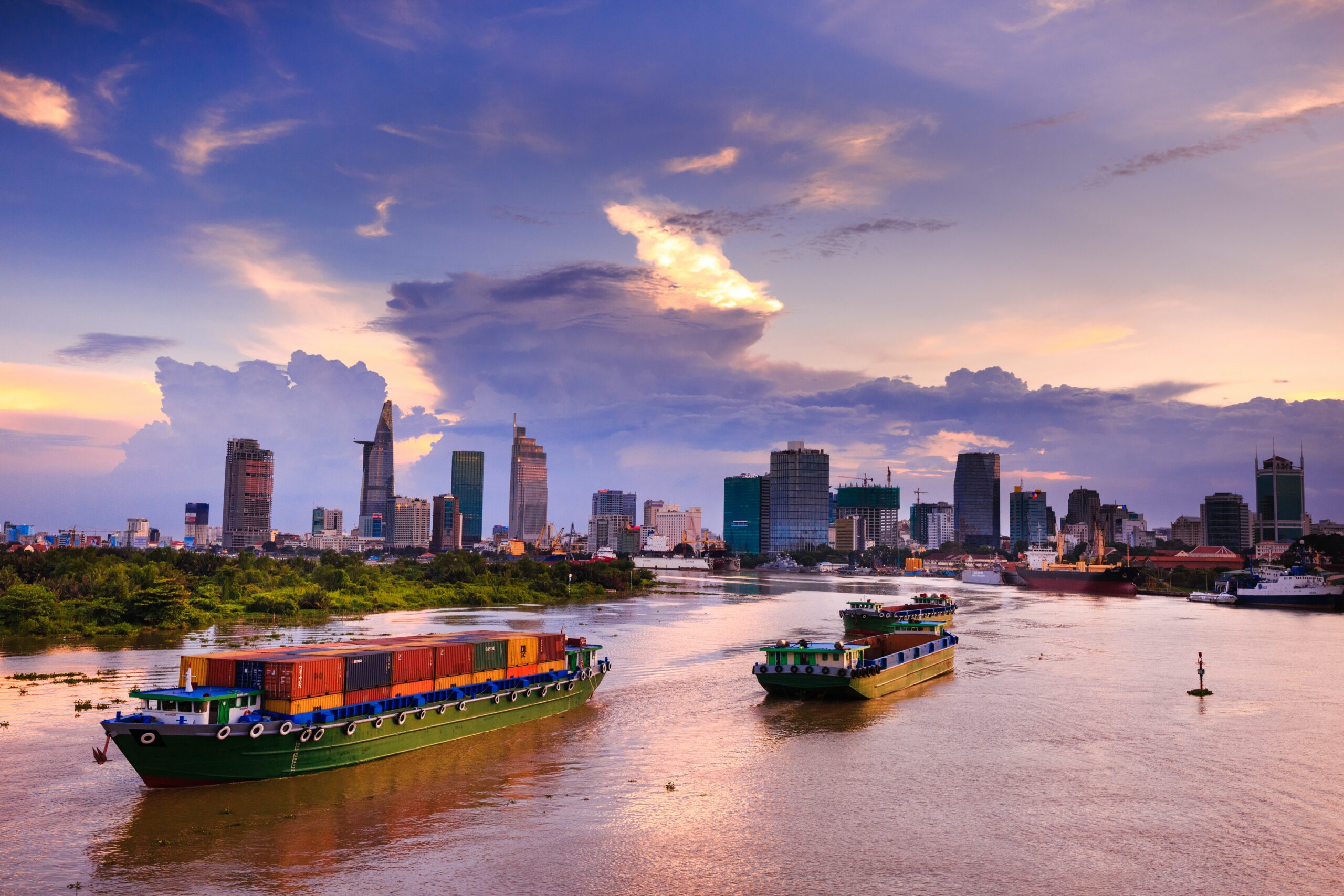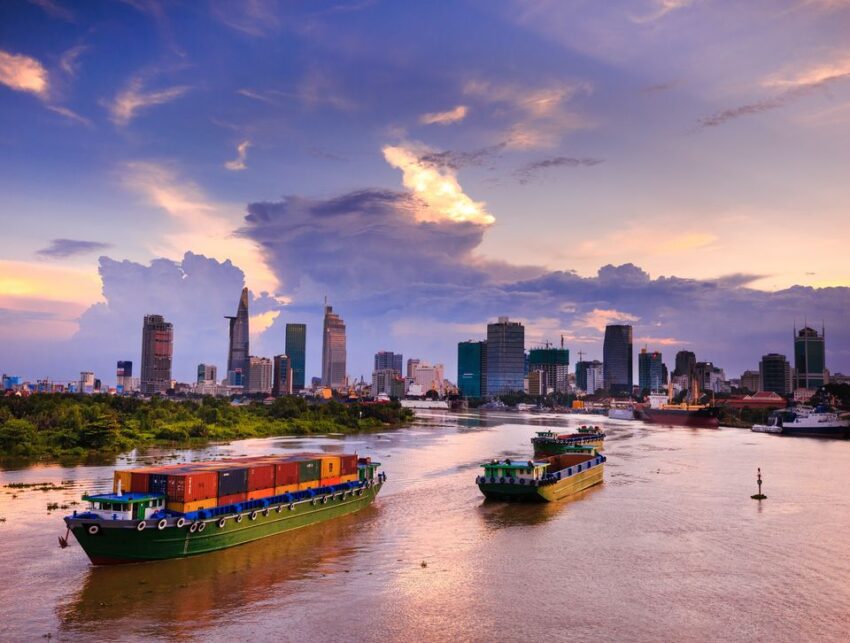While discussing the container shipping industry, we often tend to overlook the ports of South America. The reason behind this is that none of the Latin American ports make it to the list of the top 20 ports in the world. Nevertheless, trade volume in this region has enormously expanded over the last decade and the countries in this region rely heavily on container shipping to develop and sustain their economies. Additionally, the Panama Canal connecting the Pacific and the Atlantic Ocean also lies in Latin America. Moreover, with the advent of digitization and the ongoing globalization, Latin American countries now more than ever are seeking to become a part of the global economy.

The seaports in this continent are helping to boost the industrial development and economies of each country thereby enhancing the consumer power of the continent as a whole. Logistics companies that regularly ship cargoes to/from Latin America or partner with agents on this continent will definitely have to use one of the continent’s 453 ports. Keep reading this article to get a brief introduction to the largest ports in South America.
Important ports serving the container shipping industry in Latin America
-
Port of Itaqui, Brazil
Lying on the San Luis Island with a dock measuring 1,616 m in length, the Port of Itaqui in Brazil is one of the largest and busiest ports in South America. It handles around 146 million tonnes of cargo on a yearly basis. Some of the major items exported from this port consist of alcohol, refined edible oils, manganese ores, and aluminum. The important items imported to this port are bulk fertilizers, wheat, rice, coal, limestone, LPG, petroleum products, etc.
The port comes with a 7,500 sq m warehouse, a 3,000 sq m storage yard for packed cargo and four dockyards measuring 42,000 sq m. Additionally, the Itaqui Port comes with two private terminals- the Alumar terminal and the Ponta de Madeira terminal. Furthermore, the port authorities are currently working on an expansion project that will create additional storage space, a huge parking area, rail sliding, and a general cargo terminal.
-
Port of Callao, Peru
The top commercial port in Peru, the Port of Callau sprawls on the central coast in the Peruvian capital Lima. This port forms a part of the Lima-Callau metropolitan area that comprises an industrial area with several manufacturing units and shipbuilding yards. Moreover, another locational advantage of this port is its vicinity to the Jorge Chavez International Airport. Handling over 43 million tonnes of cargo every year this port can accommodate the largest cargo ships. The main items of export from this port are minerals, steel, fish oil, and refined metals.
The port covers an area of 47.4 hectares and comes with 18 berthing facilities and 8 wharves. It has a 26-hectare storage space of which 24 hectares are used for storing containers and has a warehouse space of 5 acres. Apart from its importance for the container shipping industry in Latin America, this port also has a cruise terminal.
-
Port of Cartagena, Colombia
The Port of Cartagena is one of the busiest ports in Colombia which lies on the northern shores of the country near the Caribbean. Located just 265 nautical miles from the Panama Canal, the Cartagena Port houses multiple processing units and industries like tobacco, sugar, leather products, fabrics, fertilizers, cosmetics, etc. It approximately handles around 2.3 million TEU of cargo every year. Moreover, the Caribbean Shipping Association has rated it as the Best Port in the Caribbean several times in a row. The port exports items like platinum, resin, tobacco, coffee, coal, etc. The major import items constitute food items, domestic appliances, car parts, machines, etc.
This port covers stretches of 172 hectares of land. It comprises of 8 berths and comes with a net berthing line of over 500 m by 12 m. Moreover, back in 1984, UNESCO declared this port a World Heritage Site. The Cartagena Port also has a cruise ship terminal visited by over 5,00,000 tourists every year.
-
Port of Santos, Brazil
The Port of Santos which is just 70 miles from Brazil’s most populous city of Sao Paolo is one of the premium ports in the country. With a massive logistics capacity, this port is also famous as one of the most modern ports on the continent. The city of Santos is one of the primary foreign trade routes in Brazil. Most importantly, approximately 27% of the trade balance of Brazil goes through this port. The Port of Santos is connected to more than 600 ports across 125 countries. Some of the most important shipments moved to/from the Port of Santos include wheat, sugar, oil, soybeans, alcohol, machines, paper, automobiles, cotton oranges, and fertilizers.
-
Port of San Lorenzo-San Martin, Argentina
The twin ports of San Lorenzo and San Martin located in Santa Fe province is one of the busiest ports of Argentina. Moreover, it is also one of the largest South American ports that handling 32 million tonnes of shipments per year. The province of Santa Fe is home to several industries especially chemical, oil, petrochemical, and agro-industrial. This port is also well connected to the rest of the country with an excellent network of roadways, bridges, and railways. The Rosario International Airport has situated just 32 Km from the port.
-
Port of San Antonio, Chile
The San Antonio Port in Chile is one of the largest ports in the country that is located near the capital of Santiago on the central coast of Chile. This port annually handles 12,100,000 tonnes of cargo that range from general cargo, liquid shipments, RORO, etc. This port covers an area of 495 hectares and is well connected to Santiago, south of Chile, and Argentina via road and rail. The southern terminal which handles container ships comes with 32 hectares of storage area and 12,000 sq m of warehouse space. The northern terminal which solely handles solid bulk has a 320 m dock.
-
Port of Colon, Panama
The Port of Manzanillo on the Atlantic side of Panama spreads over an area of 58 hectares. However, the port authorities are planning an extension following with another 100 acres will be added to the port area. This port handles over 14o thousand Ro-Ro vehicles on a daily basis. Furthermore, it annually handles 1.9 to 2.1 million TEU of cargo per year.


